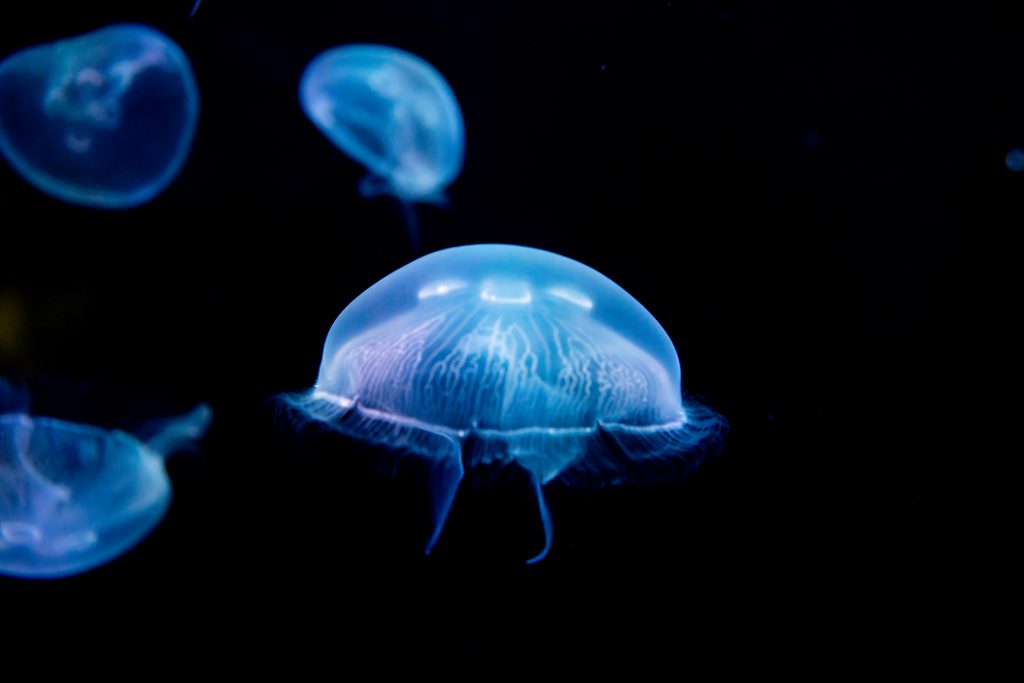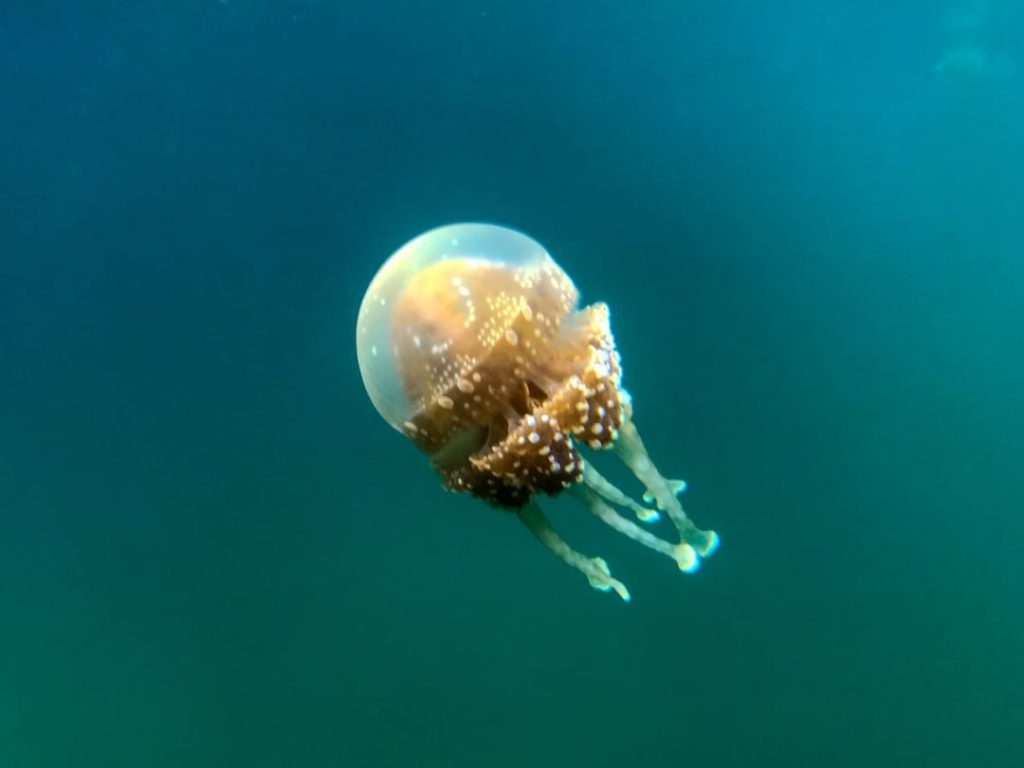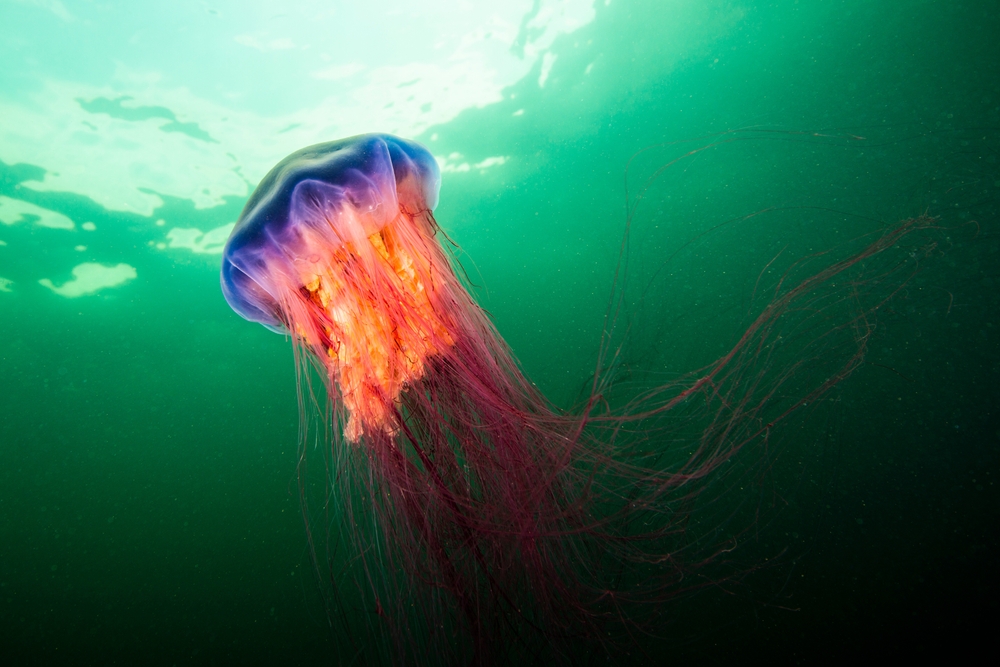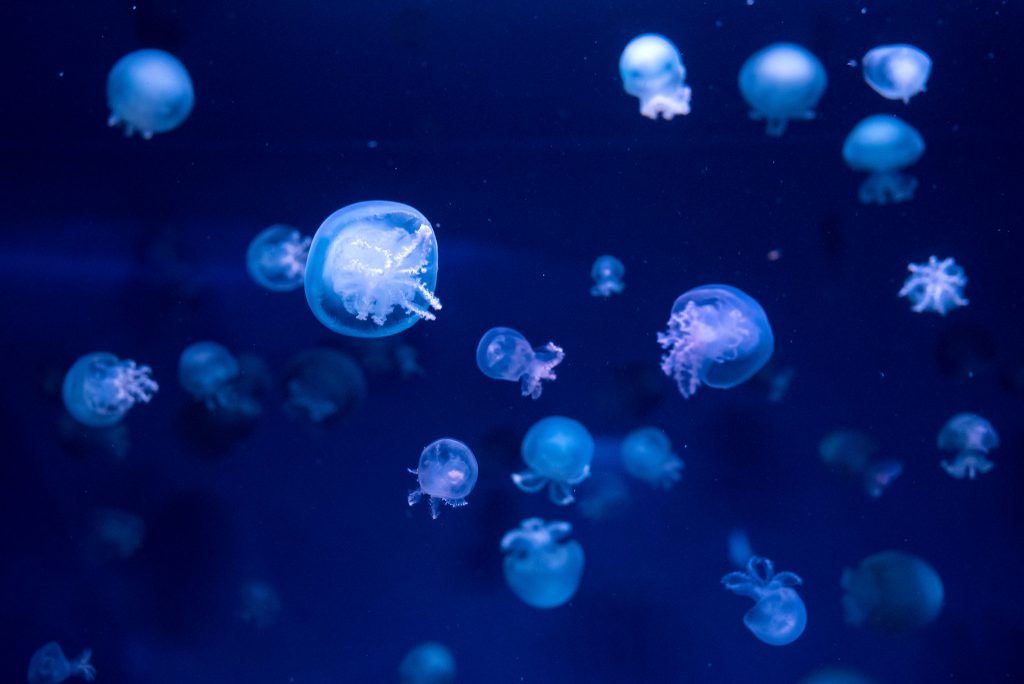Marine Life Guide In The Outer Banks: Jellyfish
Inhabiting the world’s oceans for millions of years, jellyfish are the oldest multi-organ creatures in existence. Most jellies use a form of jet propulsion to move through seawater, being “guided” by currents, wind and water conditions, as well as a number of other minor factors – sometimes posing a concern to beachgoers when they reach shallow waters or wash ashore. Jellyfish can sometimes be difficult to spot due to their mostly transparent bodies, and tendency to camouflage in the sand. Jellyfish serve as a food source for endangered sea turtles, as well as shelter for smaller fish who hide among their tentacles.
Jellyfish In North Carolina’s Outer Banks
Most species of jellyfish found on the North Carolina shorelines deliver only a mildly painful sting, if any. Let’s take a look at the types of jellyfish you may encounter on North Carolina beaches.
Moon Jellyfish

Moon jellyfish are clear and disc-shaped with tentacles. The “skeletons” of the moon jellies are most commonly found washed ashore, sans tentacles. These gelatinous disc remains do not possess stingers, rendering them harmless. Moon jellies are very weak swimmers;, meaning that entire blooms (groups) can easily be shifted by tides, currents, and heavy surf. Most often spotted in the summer, moon jellies are the most common jellyfish found along the Outer Banks beaches.
Mushroom Cap Jellyfish

Named for its fungus-like appearance, the mushroom cap jellyfish has several distinguishing characteristics, including its creamy-white color, mushroom-shaped umbrella head, and dark markings on its central “tentacles”. The mushroom cap jelly actually has mildly stinging nematocysts in place of traditional tentacles. Mushroom jellies tend to make appearances in the late fall into the winter.
Nettles
The most frequent culprit behind jellyfish stings on the OBX is the nettle. The most common – sea nettles – are reddish-brown in color, while bay nettles are milky-white. Bay nettles are smaller, and found in the sound, while sea nettles are ocean-dwellers. Both tend to arise in the late summer months. Nettle stings are typically minor. but the intensity of the sting depends on the size of the offender.
Dwarf Lion’s Mane/ Lion’s Mane

Dwarf Lion’s Mane jellies and Lion’s Mane jellies are similar in color to nettles, with pairs of stripes extending down their bells in floral-like patterns. Dwarf Lion’s Mane jellies seem to prefer the late summer season, while Lion’s Mane jellies can be spotted in the late fall and winter time.
Cannonball Jellyfish

Named for their large size and cannonball-shaped bell, the Cannonball jellyfish are rarer to sting, and rarer to see on the Outer Banks, as they are a primary food source for migrating sea turtles. However, they are very easy to spot in the water when they do appear – typically in the late summer and early fall.
Staying Safe
So what do you need to know about jellyfish before your Outer Banks visit? Here are some tips for spotting, identifying, and avoiding jellyfish – and what to do if you should experience a jellyfish sting.
- While jellyfish migration patterns are somewhat unpredictable, they are most typically spotted between May and September. Contributing factors to their appearances include heavy summer rains and consistent warm weather patterns, as well as persistent southeast winds in the fall.
- Clear jellyfish are typically not a concern. Strive to avoid reddish jellyfish and those with tentacles.
- Kill Devil Hills Ocean Rescue lifeguards have recently adopted the use of a new purple flag adorned with images of a jellyfish and a stingray. This is an expansion on the standard purple warning flags commonly used along the coast to advise of dangerous sea creatures nearby, similar to other common maritime warnings like the red banner flown when rip currents are present, and yellow flags advising of heavy shore break or dangerous currents.
- Know the difference between jellyfish and Portuguese man o’ war. Generally-speaking, jellies are underwater swimmers with clear, jellylike bodies and tentacles hanging below. Man-of-war have colorful air-filled bladders that keep them afloat on the water’s surface, while tentacles dangle below. Both sea creatures inject venom when they sting, and can sting even after they’re dead.
- Stay at least 300 feet away from fishing piers, where jellyfish blooms often cluster.
Treating A Jellyfish Sting
Common symptoms of a jellyfish sting include red welts, blisters, stinging pain, tingling, and itching. Much like an allergic reaction, severity and symptoms can vary. Treatment is relatively standard in most cases, and most jellyfish stings aren’t serious. If you experience a jellyfish sting:
- Wash and rinse the affected area with vinegar to neutralize the venom and offer relief.
- With gloved hands, remove the tentacles with tweezers.
- Soak the area in hot water for about a half-hour
- Apply Hydrocortisone cream
You can always contact a lifeguard or doctor for further treatment as needed. If you experience difficulty breathing, chest pain, or any other serious symptoms, seek medical treatment immediately.
Posted on 09/14/2020 in Area Information, Vacation Tips


















